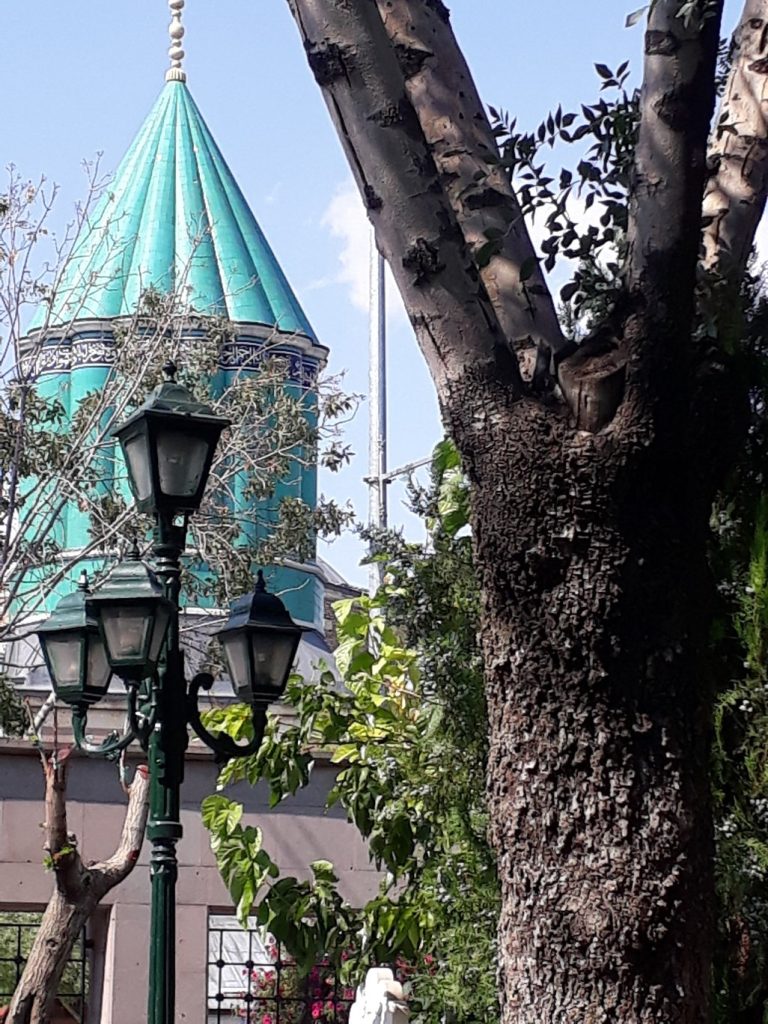
The ‘Green Dome’ of the Mevlana Museum, known as Kubbe-i Hadra, was reopened to visitors
The “Green Dome,” known as the Kubbe-i Hadra, which was built after the death of the renowned 13th-century Muslim saint and anatolia mystic Mevlana Jalaluddin Rumi has been reopened for visitors following extensive restoration work that began three years ago.
The “Kubbe-i Hadra” (Green Dome), also known as the tomb, was built by the architect Tebrizli Bedrettin on four elephant foot (thick column) supports, at a cost of 130,000 Seljuk dirhams.
Construction activities continued without interruption after this date, with additions made until the end of the 19th century.
After its construction, the Kubbe-i Hadra underwent several restoration projects, with the most comprehensive restoration taking place in the year 2020.
📣 Our WhatsApp channel is now LIVE! Stay up-to-date with the latest news and updates, just click here to follow us on WhatsApp and never miss a thing!!

During the restoration process, the damaged and detached tiles were removed, revealing the brick dome from the Anatolian Seljuk period underneath.
In the space between the dome and the brick structure below, approximately 100 tons of added weight, such as concrete and iron, with a thickness ranging from 15 to 18 centimeters, was removed.
The Scientific Committee decided to reproduce the tiles in shades of blue and turquoise based on tile samples from 1816 and 1835. These tiles were meticulously crafted by hand in Konya using the Iznik-style underglaze technique, marking the first time this had been done since 1396.
However, during the restoration process, deformations occurred, and the dome’s cover was removed, and the scaffolding started to be dismantled.
Restoration work was resumed due to the chipping of the tiles and deformations.
With the dismantling of the scaffolding, approximately 8,500 pieces of ceramic tiles were recreated using Horasan mortar.
You may also like
- A 1700-year-old statue of Pan unearthed during the excavations at Polyeuktos in İstanbul
- The granary was found in the ancient city of Sebaste, founded by the first Roman emperor Augustus
- Donalar Kale Kapı Rock Tomb or Donalar Rock Tomb
- Theater emerges as works continue in ancient city of Perinthos
- Urartian King Argishti’s bronze shield revealed the name of an unknown country
- The religious center of Lycia, the ancient city of Letoon
- Who were the Luwians?
- A new study brings a fresh perspective on the Anatolian origin of the Indo-European languages
- Perhaps the oldest thermal treatment center in the world, which has been in continuous use for 2000 years -Basilica Therma Roman Bath or King’s Daughter-
- The largest synagogue of the ancient world, located in the ancient city of Sardis, is being restored











Leave a Reply